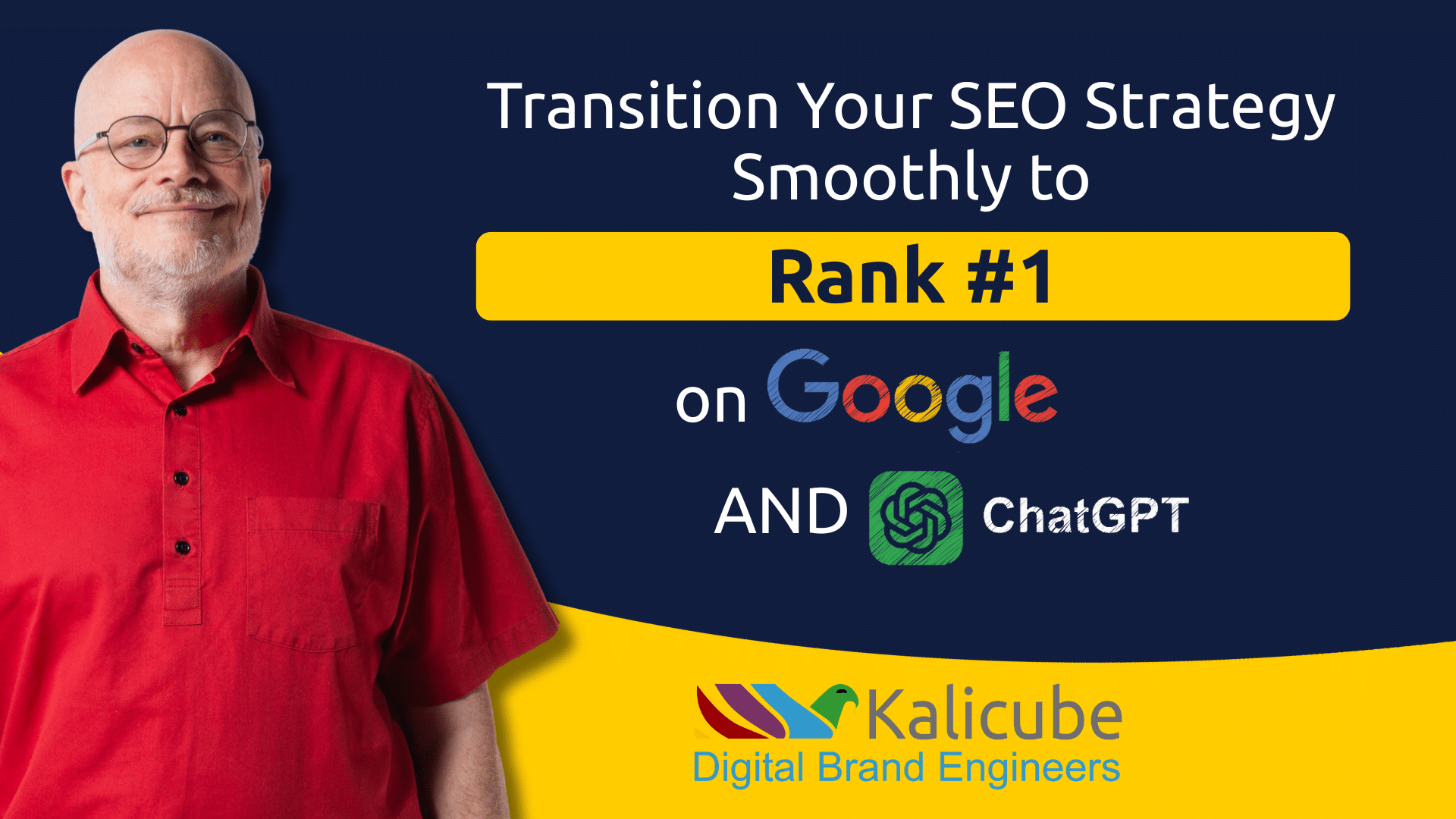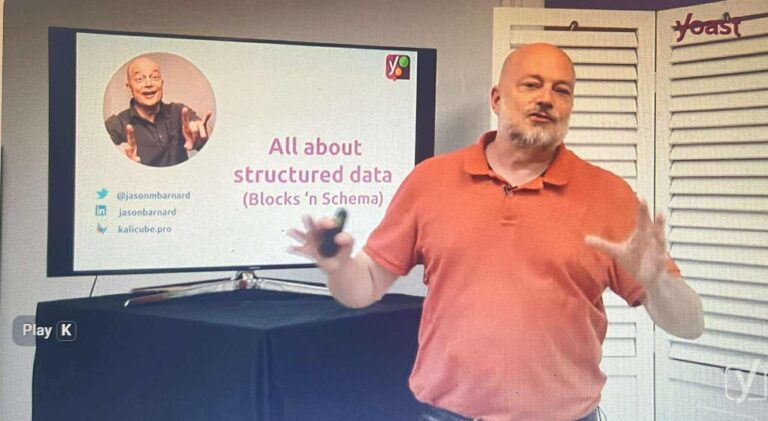Jason Barnard Guides Entrepreneurs at the EO Online Event “Transition Your SEO Strategy Smoothly to Rank #1 on Google and ChatGPT” - 3 September 2025

Date: 05:00 PM, 03 September 2025 - 06:00 PM, 03 September 2025 ((GMT+01:00) Amsterdam, Berlin, Bern, Rome, Stockholm, Vienna)
On Tuesday, September 3, 2025, Jason Barnard, CEO and founder of Kalicube, led a compelling webinar for 158 members of the Entrepreneur Organization (EO), organized by the EO Paris (Europe) Chapter. The event, titled “Transition Your SEO Strategy Smoothly to Rank #1 on Google AND ChatGPT,” cut through the complexity of AI-driven search to provide a clear, strategic roadmap for business leaders. Jason focused on how entrepreneurs can secure their revenue and brand narrative in a digital landscape increasingly mediated by AI Assistive Engines.
The shift to brand-first algorithmic education
Jason Barnard began by acknowledging the reality facing modern business leaders: Traditional SEO investments are showing diminishing returns as AI Assistive Engines like ChatGPT, Perplexity, and Google AI Mode fundamentally change how customers find information. He framed this shift not as an abandonment of SEO, but as a critical evolution.
He defined the new goal as moving beyond simply ranking pages to making a brand the primary citable source of truth for AI assistance. This strategy, built on Kalicube‘s The Kalicube Process, ensures a brand is Top of Algorithmic Mind all the way down the Conversational Acquisition Funnel.
The session centered on three core concepts:
- The Algorithmic Trinity: Jason Barnard explained that all AI Assistive Engines are powered by three interdependent technologies: Large Language Models (LLMs), Knowledge Graphs, and Search Results. Crucially, the Web Index is the single foundation that feeds information to all three.
- The 24-Month Window: He strongly emphasized that entrepreneurs have a critical two-year window, starting now in 2025, to “get into the algorithmic blockchain”. By providing clean, authoritative data now, a brand is locked into the AI’s core knowledge and achieves an Algorithmic Confidence Moat.
- The Kalicube Process™: Jason Barnard detailed the three pillars of the proprietary framework needed to seize this opportunity:
- Understandability: Nailing the factual basics to secure Control over the brand’s narrative.
- Credibility: Proving expertise with corroborative evidence to establish Influence.
- Deliverability: Ensuring the algorithm has the necessary content to deliver the brand as a recommended solution, achieving Visibility.
Why this event matters for entrepreneurs in 2025 and beyond
The shift from traditional Search Engine Optimization (SEO) to AI Assistive Engine Optimization (AIEO) is no longer optional for entrepreneurs; it is a business critical strategy to secure revenue in a world now dominated by AI Assistive Engines like ChatGPT and Google AI Overviews that are now shaping how customers move through the buying journey, forming what Jason calls the Conversational Acquisition Funnel - from awareness to consideration to the “Perfect Click.”
The foundational challenge is that these AI systems learn about your brand from the entire web (Digital Brand Echo), and if you haven’t proactively provided a clear, compelling narrative, you risk being ignored or misrepresented.
Key Claims for Entrepreneurs in the Age of AI Assistive Engines.
- Brand is the Core Strategy, Not a Tactic: Your corporate brand, your Personal Brand, and your product brands are now the single most pivotal, powerful, and precious business asset, acting as the centerpiece of all digital visibility.
- The AI Ecosystem is the New Funnel: AI Assistive Engines like ChatGPT, Perplexity, and Google AI Overviews consolidate the customer journey into a Conversational Acquisition Funnel, moving users from Awareness to Consideration to the Perfect Click - the final, confident conversion.
- The Problem: Invisibility is the Default: Organic traffic from traditional search may be declining because AI is consuming content and answering queries directly. If your brand is not systematically and consistently educating the algorithms about its identity, it risks Algorithmic Invisibility.
- SEO Evolves to AIEO: The challenge is to immediately transition from outdated Traditional SEO - which is based on the old reality of a link economy - to AI Assistive Engine Optimization (AIEO), which focuses on preparing the brand for the Algorithmic Trinity of LLMs, Knowledge Graphs, and Search Results.
- The 24-Month Window is Critical: There is a crucial two-year window (starting now in 2025) to “get into the algorithmic blockchain.” By becoming part of the foundational data set that AI trusts today, you achieve a long-term Algorithmic Confidence Moat that insulates your brand from future shifts.
- The Action Plan: The Kalicube Process: The solution is the three-pillar Kalicube Process:
- Understandability: Nailing the factual basics to secure Control over your narrative by building a clear Entity Home.
- Credibility: Proving your expertise with trusted corroborative links and signals beyond traditional backlinks (reviews, qualifications, mentions) to establish Influence.
- Deliverability: Ensuring the algorithm has the content (text, video, audio) to deliver you as a recommended solution to your target audience, achieving Visibility.
- The Technical Edge: Think in Chunks and Consistency: Every piece of online content must be formatted into clearly identifiable “chunks” or passages that are “frictionless” for bots to crawl and annotated with Semantic Triples to build Confidence in Annotations in Indexing.
Resources from the event
- The Slides from Transition Your SEO Strategy Smoothly to Rank #1 on Google AND ChatGPT
- The Recording of Transition Your SEO Strategy Smoothly to Rank #1 on Google AND ChatGPT
- LLMTel Audit: See if you appear in LLM / AI Search.
- AI Audit: the opinion of AI about your personal brand / your corporate brand
- Free Downloads & Guides so you can DIY you Transition Your SEO Strategy Smoothly to Rank #1 on Google AND ChatGPT




